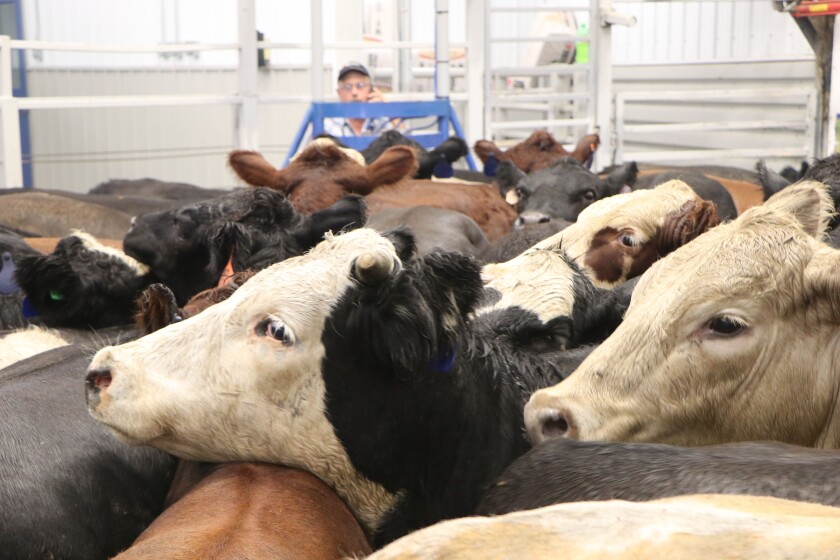Recognizing Livestock Danger Security (LRP) Insurance: A Comprehensive Guide
Navigating the realm of animals danger security (LRP) insurance can be an intricate venture for many in the agricultural sector. This sort of insurance uses a safeguard versus market variations and unexpected conditions that could affect animals producers. By understanding the complexities of LRP insurance policy, producers can make informed choices that may secure their procedures from monetary dangers. From how LRP insurance policy works to the different protection options available, there is much to discover in this thorough guide that could potentially shape the method animals producers come close to danger administration in their companies.

Exactly How LRP Insurance Works
Sometimes, understanding the technicians of Animals Threat Protection (LRP) insurance coverage can be complicated, yet breaking down how it works can offer clearness for farmers and ranchers. LRP insurance is a danger administration tool created to shield animals manufacturers against unexpected rate declines. The policy enables producers to establish an insurance coverage degree based on their specific demands, choosing the variety of head, weight variety, and protection cost. Once the policy remains in area, if market prices fall listed below the insurance coverage rate, manufacturers can file a claim for the difference. It's important to keep in mind that LRP insurance coverage is not a profits assurance; instead, it focuses only on cost risk protection. The insurance coverage duration normally varies from 13 to 52 weeks, giving flexibility for manufacturers to pick a duration that aligns with their manufacturing cycle. By using LRP insurance policy, farmers and ranchers can alleviate the financial dangers associated with fluctuating market rates, making certain better stability in their operations.
Qualification and Insurance Coverage Options

When it comes to protection alternatives, LRP insurance provides manufacturers the flexibility to choose the insurance coverage degree, protection period, and endorsements that ideal suit their risk administration demands. By recognizing the eligibility requirements and insurance coverage options readily available, livestock manufacturers can make informed decisions to handle risk properly.
Benefits And Drawbacks of LRP Insurance Policy
When evaluating Livestock Danger Protection (LRP) insurance policy, it is important for animals producers to weigh the negative aspects and benefits fundamental in this threat administration device.

One of the main benefits of LRP insurance coverage is its capability to supply security versus a decrease in animals costs. Furthermore, LRP insurance coverage provides a level of flexibility, enabling producers to customize protection levels and policy periods to suit their certain demands.
One constraint of LRP insurance policy is that it does not shield against all kinds of threats, such as condition break outs or all-natural disasters. It is critical for manufacturers to very carefully evaluate their private danger direct exposure and economic situation to figure out if LRP insurance is the appropriate threat management device for their procedure.
Recognizing LRP Insurance Coverage Premiums

Tips for Making The Most Of LRP Perks
Making best use of the advantages of Livestock Danger Defense (LRP) insurance policy calls for strategic planning and proactive risk management - Bagley Risk Management. To take advantage of your LRP protection, take into consideration the complying with suggestions:
Routinely Evaluate Market Problems: Stay informed regarding market fads and rate variations in the livestock industry. By monitoring these elements, you can make educated choices regarding when to purchase LRP coverage to safeguard against potential losses.
Establish Realistic Coverage Levels: When choosing insurance coverage degrees, consider your production prices, market value of livestock, and prospective risks - Bagley Risk Management. Setting reasonable coverage levels makes sure that you are properly shielded without paying too much for unnecessary insurance
Diversify Your Insurance Coverage: Rather than counting only on LRP insurance policy, take into consideration expanding your danger management methods. Incorporating LRP with various other risk administration devices such as futures contracts or alternatives can provide detailed protection against market uncertainties.
Testimonial and Change Coverage Consistently: As market conditions change, occasionally evaluate your LRP coverage to ensure it aligns with your present danger direct exposure. visit this site Adjusting protection levels and timing of purchases can assist maximize your danger protection strategy. By following these pointers, you can make best use of the benefits of LRP insurance policy and secure your livestock procedure versus unpredicted risks.
Conclusion
In conclusion, animals danger security (LRP) insurance policy is a valuable tool for farmers to manage the monetary risks associated with their livestock operations. By comprehending how LRP functions, qualification and coverage choices, as well as the advantages and disadvantages of this insurance, farmers can make enlightened decisions to shield their source of incomes. By meticulously taking into consideration LRP costs and carrying out strategies to optimize advantages, farmers can minimize prospective losses and guarantee the sustainability of their operations.
Livestock producers interested in obtaining Animals Risk Defense (LRP) insurance coverage can discover an array of eligibility requirements and protection choices tailored to their details animals procedures.When it comes to insurance coverage choices, LRP insurance coverage supplies producers the flexibility to pick the coverage degree, protection duration, and recommendations that ideal match their threat management demands.To realize the intricacies of Animals Risk Protection (LRP) insurance policy totally, recognizing the variables influencing LRP insurance costs is vital. LRP insurance costs are determined by various elements, including the coverage degree selected, the expected rate of livestock at the end of the coverage period, the kind of livestock being insured, and the size of the protection duration.Evaluation and Change Insurance Coverage Consistently: As market problems change, occasionally review your LRP insurance coverage to ensure it straightens with your current danger exposure.